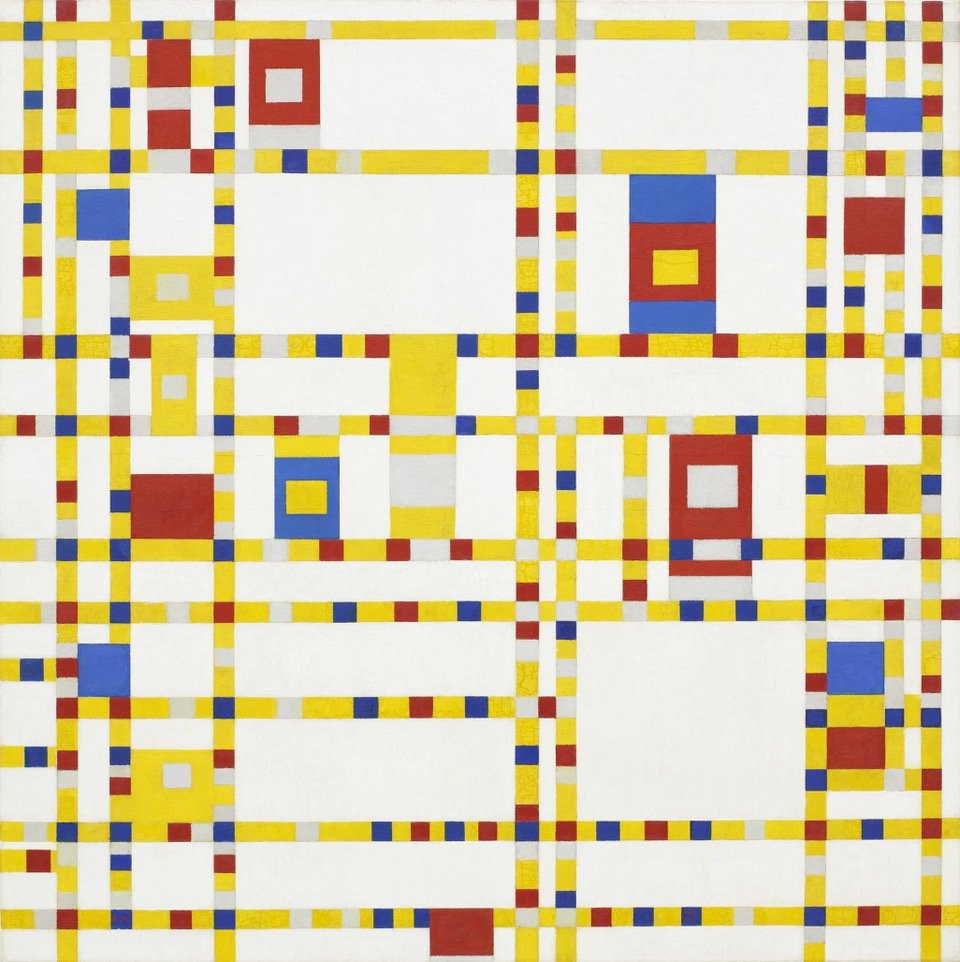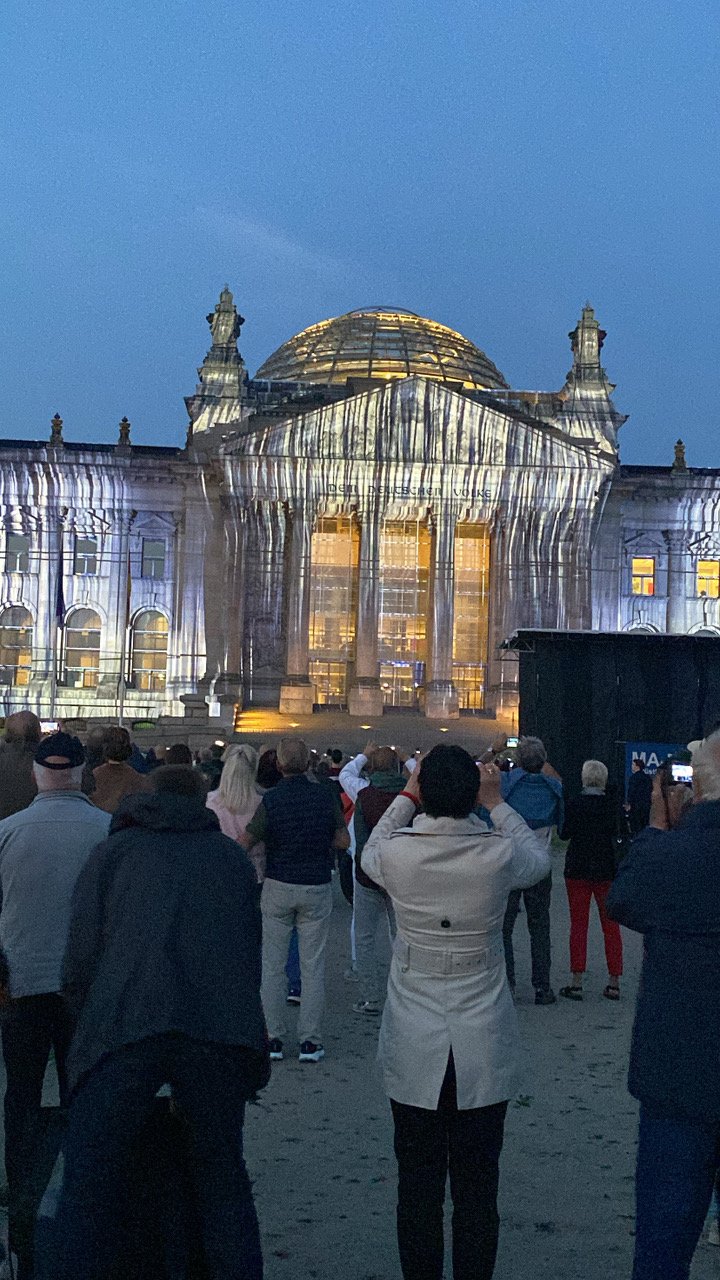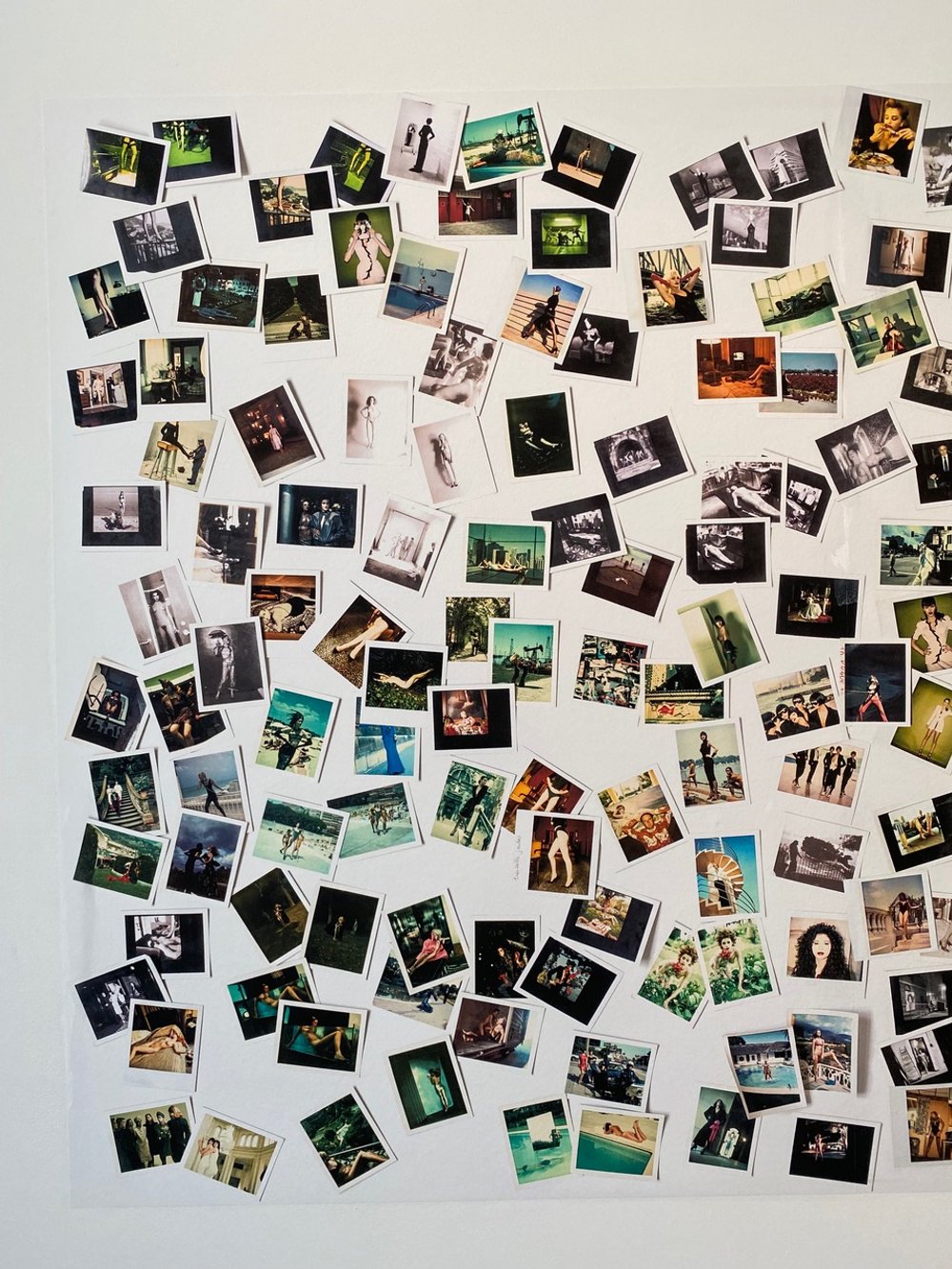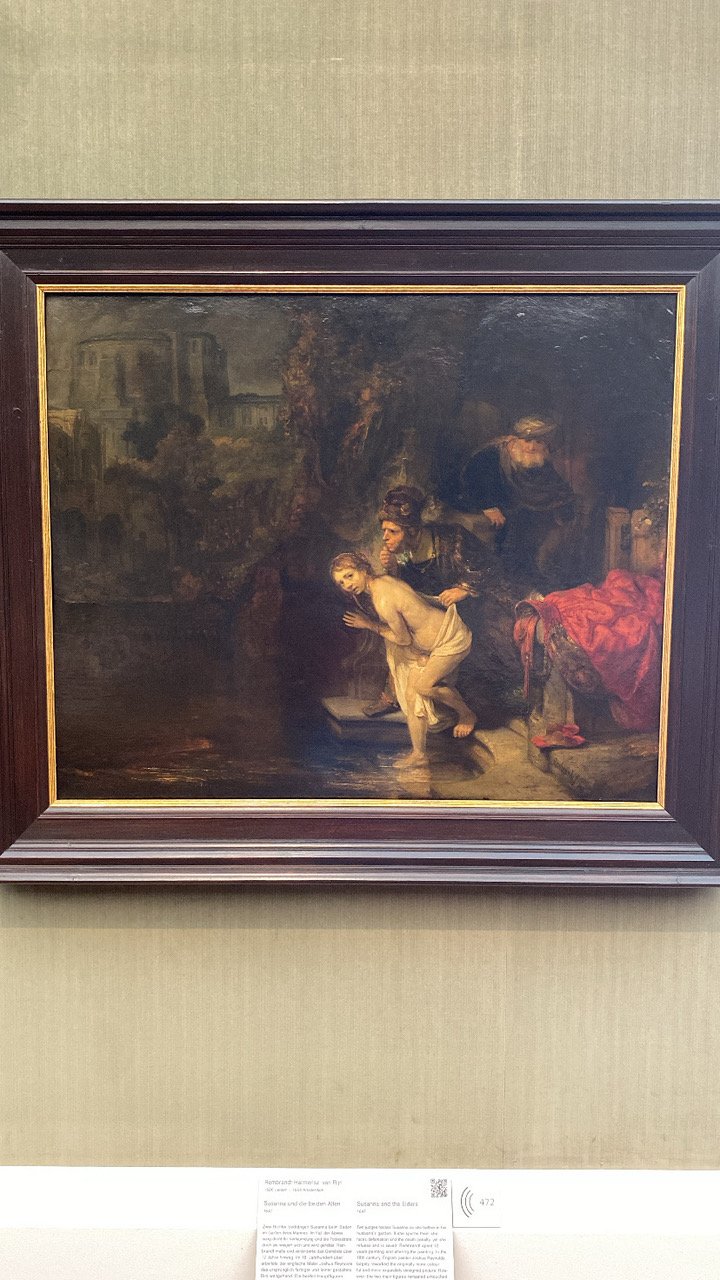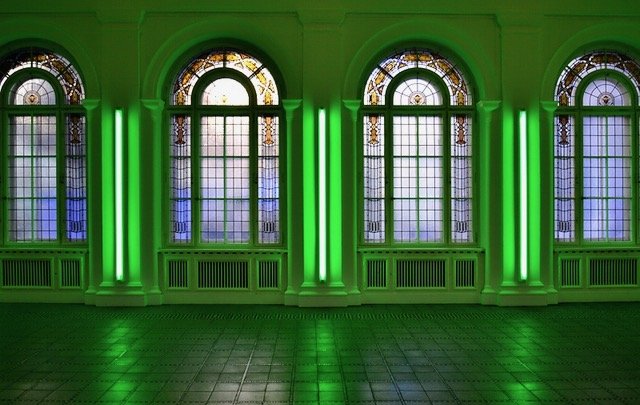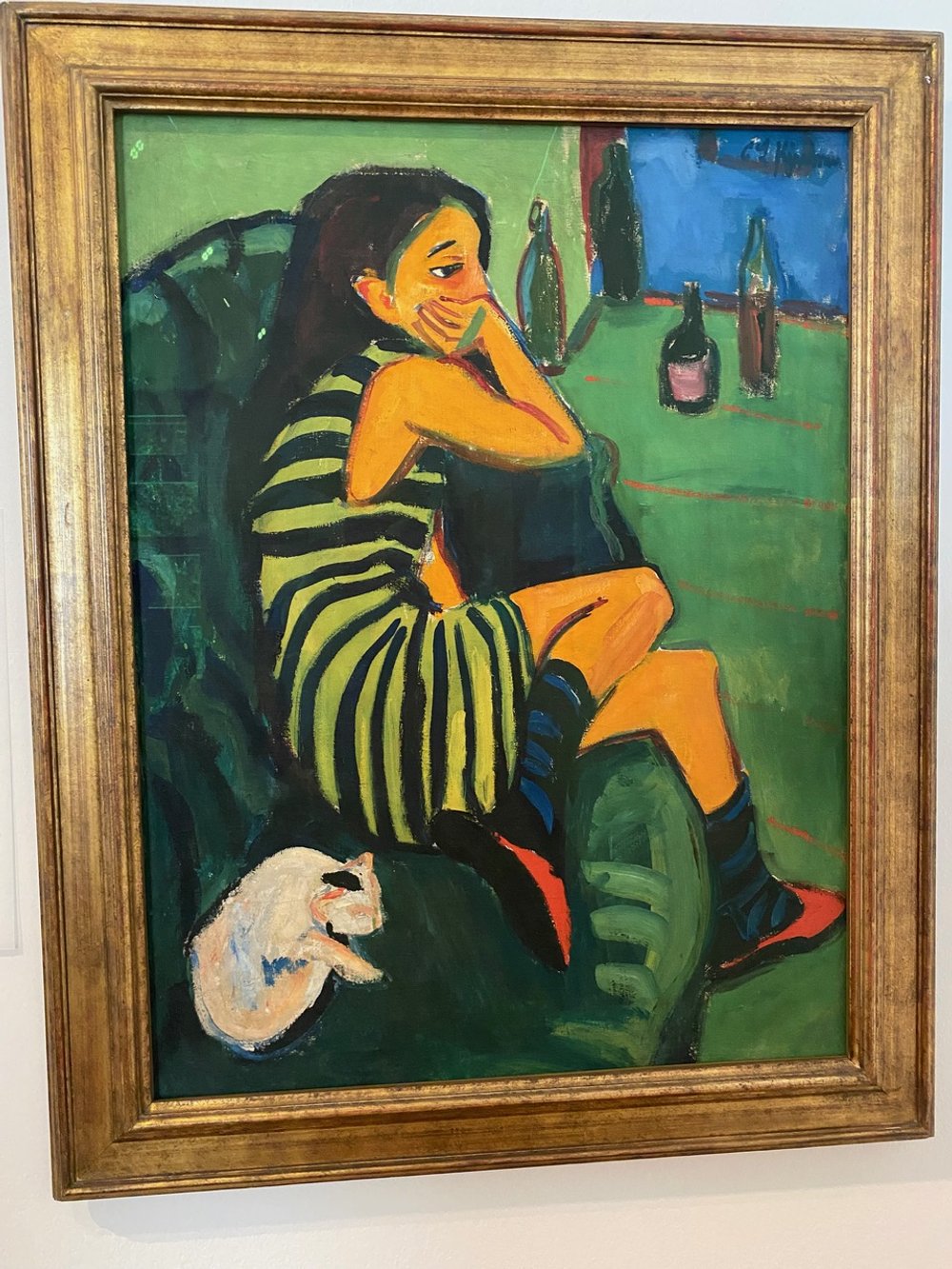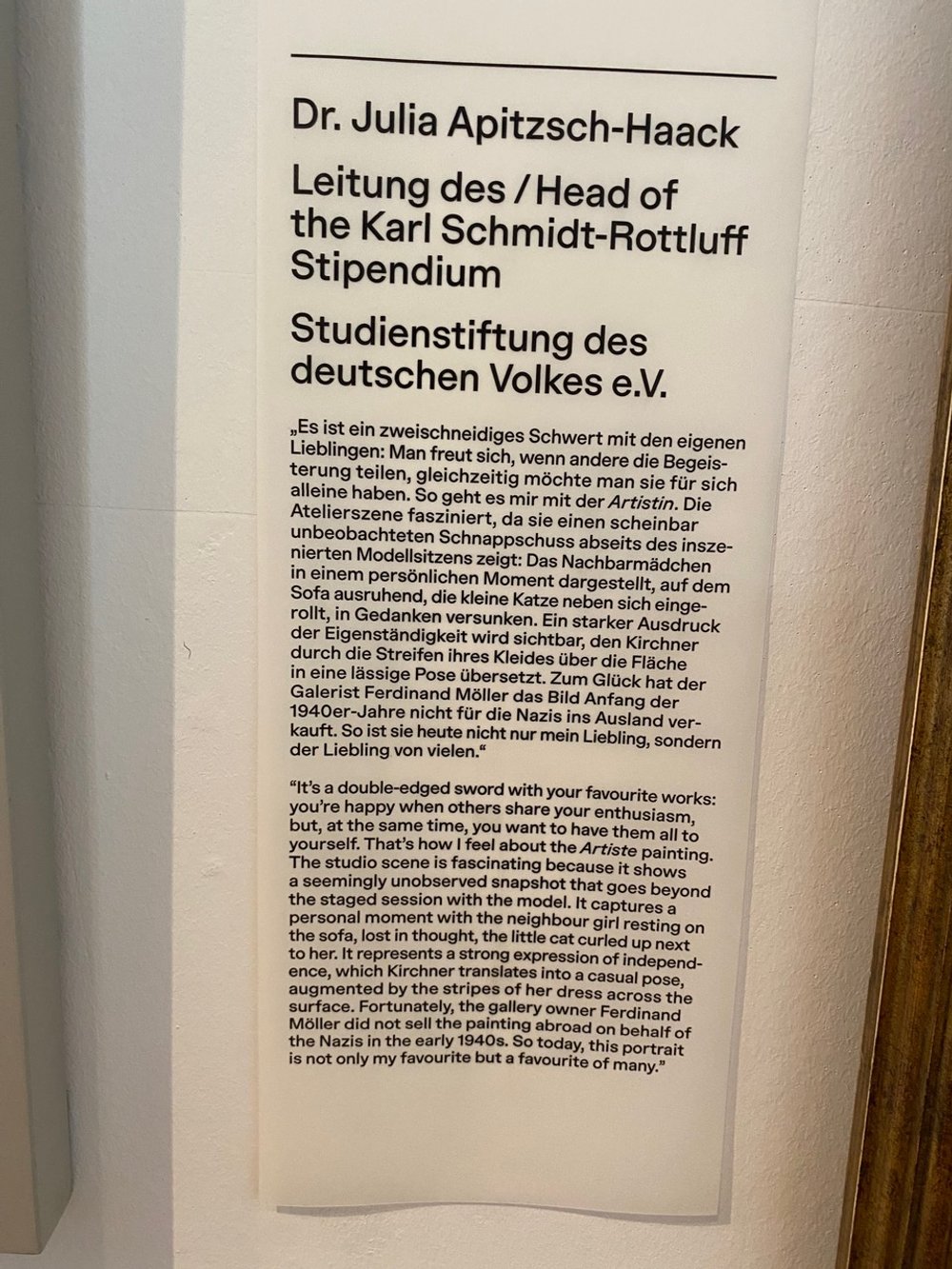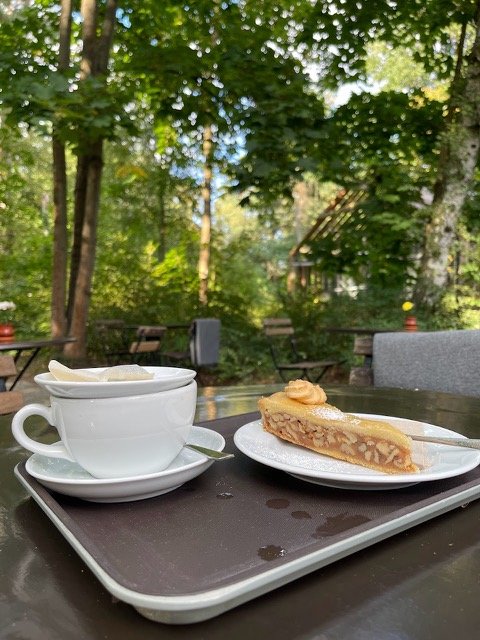Berlin Beckoned, II
Just the Art
Nic at the Reichstag, Berlin
Bienvenue and welcome back to Musée Musings, your idiosyncratic guide to Paris and art. Today’s subject - the wonderful exhibitions I saw in Berlin. I won’t be talking about current events. I need a break. It doesn’t mean that I’m not worried about what’s going on, I am. But I’m not going to write about it. I would like to mention though that the making of art does not happen in a vacuum. There’s always a cultural context and often a political one, too. You only have to read a little bit about Picasso. You might begin here: The Usual Suspects
The day before Nicolas and I left Paris for Berlin, I ‘dragged’ him to three exhibitions. That set the pace for my own explorations in Berlin the following week. In Paris, Nicolas and I started out at one of my favorite galleries, Galleria Continua. We saw a group exhibition called ‘Pièces à vivre.’ Spaces were divided into rooms of a house. The curator’s aim was to blur the lines between art and everyday life. On the wall of the Children’s Room, for example, was the Chinese artist Ai Weiwei’s riff on Mondrian’s Broadway Boogie Woogie - made of Legos. (Figs 1, 2)) Here, according to the curators, the artist questions “the reproducibility of art, visual standardization, and the relationship between the avant-garde and popular culture.” In the Kitchen is another Ai Weiwei Lego ‘painting.’ A still-life homage to Giorgio Morandi, a 20th C Italian artist who lived in his mother’s house his entire life and painted the same objects over and over again. (Figs 3, 4) The show stopper in the kitchen is a work by Subodh Gupta, (whose exhibition at Le Bon Marché I wrote about here: Trash or Treasure). Gupta’s works are always overflowing with readily available, mostly tin, objects often associated with India. In this kitchen, “the beating heart of every home,” a storage unit is covered with ladles, plates, and a hologram of a steaming pot. (Fig 5) According to the curators, “the artist transforms these banal objects into sacred relics of the everyday, evoking family memory, care, and the rituality of domestic gestures.” I’ll tell you about one more space - the Inner Courtyard presided over by Eva Jospin who works almost exclusively in a material she has made her own, cardboard. (Fig 6) Here she has trained cardboard tendrils over a garden trellis. By bringing an outdoor space into the museum, the piece “blurs the boundaries between nature and architecture, outside and inside.”
Figure 1. Ai Weiwei, after Mondrian, Broadway Boogie Woogie, in Legos
Figure 2. Piet Mondrian’s Broadway Boogie Woogie, 1943
Figure 3. Ai Weiwei’s Homage to Giorgio Morandi
Figure 4. Still Life, Giorgio Morandi
Figure 5. Subodh Gupta, Kitchen
Figure 6. Eva Jospin, Inner Courtyard
There was a second exhibition at Galleria Continua but art is long and life is short (ars longa, vita breves), so we left. As we were walking home, I noticed a poster for an exhibition at the National Archives on the role of music in the French Republic from the Revolution to the Front Populaire (1789 to 1938). (Figs 7, 8) We had a quick look - the exhibition was filled with sheet music and paintings and photographs of people playing their instruments for various state holidays. It was fascinating to see these events documented through music. We continued along our way and peeked into the Dover St. Market on rue Franc Bourgeois. Cylinders are a constant in the courtyard. It is how they are covered that changes. Now they are covered with enlarged photographs of bamboo forests, informed by this phrase by the founder of the Japanese fashion label, Comme des Garçons and the owner of this retail store, Rei Kewokuba: “I had this vision of the world where I could breathe deeply.” (Fig 9) In the basement exhibition space were sculptures by Alberto Vitelio made from reclaimed wood from renovations and demolitions of Parisian apartments. (Fig 10)
Figure 7. Musique et République, National Archives, Paris
Figure 8. Sheet music, paintings of celebrations featuring musicians, National Archives, Paris
Figure 9. Dover Street Market Courtyard, Paris
Figure 10. Sculpture made from reclaimed wood, Alberto Vitelio, Dover Street Market, Paris
On our first full day in Berlin, we visited the museum of everyday life in the GDR, the museums at the Berlin Wall and explored our neighborhood, Prenzlauer Berg, which I highly recommend either as a place to stay or to wander when you go to Berlin and you should go to Berlin. After dinner, we went to the Reichstag for a light show. This year marks the anniversaries of 3 of Christo and Jeanne Claude’s projects: the 20th anniversary of The Gates in New York City, the 30th anniversary of Wrapped Reichstag in Berlin (Fig 11) and the 40th anniversary of The Pont Neuf Wrapped in Paris.
Figure 11. Reichstag Wrapped, Berlin, Christo & Jeanne-Claude, June 1995
Getting permission to wrap the Reichstag took a long time, (24 years) and lots of meetings (with 352 members of parliament) and lots of debate (70 minutes in the Bundestag). Then it took 90 professional climbers and 120 installation workers to assemble it. Five million people saw it during the 2 weeks it was up. To commemorate its 30th anniversary, a projection on the West facade of the Reichstag offered a glimpse of what Wrapped Reichstag looked like in June 1995.(Fig 12). Paris’ Point Neuf wrapping, scheduled for September, has been postponed until next summer.
Figure 12. Reichstag Wrapped light show, June 2025, Berlin
The next day, my first of three stops was the Foundation Helmut Newton. I knew of Newton, especially his fashion photographs. They are often edgy, sometimes even sadistic. (Figs 13 - 15). Newton lived in London, Paris. L.A. and Monte Carlo. I wondered why he chose Berlin for his Foundation. Turns out, Newton was born in Berlin, in 1920, into a Jewish family who fled Nazi persecution in 1938. Helmut first obtained passage to Singapore and then to Australia. He was interned by the British in both countries. When he was released, he joined the Australian Army. In 1945, he became a British citizen and changed his name to Newton. Commissions from Australia Vogue led to ones from British Vogue and then with French Vogue and Harper’s Bazaar.
Figure 13. Helmut Newton and some models
Figure 14. Helmut Newton - photo of model, legs, equipment, Foundation Helmut Newton
Figure 15. A model and her shoes, and the shoes, Helmut Newton
Not long before his sudden death of a heart attack (at age 82), Newton pledged his work to the city of Berlin. The Helmut Newton Foundation is located in a grand 1909 building that the Foundation renovated. The central element of the interior is a grand red carpeted staircase which permits every visitor to walk the red carpet. There’s a replica of Newton’s Monte Carlo studio filled with playful and colorful objects (Fig 16)
Figure 16. Recreation of Helmut Newton’s studio in Monte Carlo
I was here to see an exhibition on Newton’s use of Polaroid cameras. Here’s what I learned, Newton used Polaroids for fashion shoots to see how a scene would translate into an image and to test lighting and composition. The most important thing I picked up was this: Polaroids are to photographers what sketches are to artists. (Fig 17)
Figure 17 Some Polaroids, Helmut Newton
The two other museums I visited that day were the Gemaldegalerie and the Decorative Arts Museum both of which are in a complex called Kulturforum. I’ve mentioned the exhibition at the Gemaldegalerie. Paintings from Odessa paired with paintings in this museum’s own collection. The museum’s permanent collection includes one of my favorite paintings by Rembrandt, Susanna and the Elders (Fig 18).
Figure 18. Susannah and the Elders, Rembrandt
The exhibitions I selected for the next day were all fantastic and each was located in a completely different kind of space. I started at Hamburger Bahnhof, the National Gallery of Contemporary Art. (Fig 19) In the 19th century it was one of Berlin's terminal stations. Then it became a museum of transport and construction. When the National Socialists came to power in 1933, the tracks were used to deport Jews and others to extermination camps. In the 1980s, the building became a museum. Here’s the museum’s mission statement: “The Hamburger Bahnhof stands for belonging, respect, and responsibility–and resolutely opposes all forms of discrimination, hatred, and exclusion. Plurality of voices, tolerance, diversity and mutual respect are the basis of a democratic society…Hamburger Bahnhof - speaks out with its programs and in everyday interaction against racism, anti-Semitism and Islamophobia, ableism, age discrimination, sexism and queer hostility, violence and every form of hatred and discrimination.” Too ‘woke’?
Figure 19. Hamburger Bahnhof, National Gallery of Contemporary Art, Berlin
Art starts as soon as you enter the garden with a musical exhibition. Tones of varying pitch, produced by blowing through conch shells, emanate from the trees. For the facade, Dan Flavin designed blue fluorescent tubes. In the east stairwell of the main building, another Flavin installation (Fig 20) reflects the east-west orientation of Hamburger Bahnhof. Until 1990, the Berlin Wall stood directly beside the building.
Figure 20. Dan Flavin Installation, Hamburger Bahnhof , Berlin
The exhibition I was there for was in the main Historic Hall, a site-specific installation by the young Czech artist, Klára Hosnedlova. I gravitate to works that incorporate natural materials like cotton, silk, hemp, flax and traditional female art forms, like sewing, weaving, knitting, crocheting. Hosnedlova’s installation is composed of flax, hemp and thread as well as sand, glass, concrete and metal, contrasts of hard and soft, masculine and feminine, which “expose dualities between organic and inorganic, permanence and decay, handmade and industrial…”. (Figs 21-26)
Figure 21 Historic Hall, Klára Hosnedlova, Hamburger Bahnhof, Berlin
Figure 22. Historic Hall, Klára Hosnedlova, Hamburger Bahnhof, Berlin, Concrete slabs, sand and music system
Figure 23. Historic Hall, Klára Hosnedlova, Hamburger Bahnhof, Berlin, detail
Figure 24. Historic Hall, Klára Hosnedlova, Hamburger Bahnhof, Berlin. Tapestry, embroidery, sand, glass
Figure 25 Historic Hall, Klára Hosnedlova, Hamburger Bahnhof, Berlin, Embroidery, glass, sand
Figure 26 Historic Hall, Klára Hosnedlova, Hamburger Bahnhof, Berlin, Embroidery detail
Six hand woven tapestries made from flax and hemp, dyed in earth tones, hang from the ceiling to the floor. Three thousand concrete slabs cover the floor, in stark contrast to the soft sculptures hanging above them. The slabs are a reference to the brutalist architecture of communist East-Central Europe. Eight arches filled with metal panels frame the installation. Their cold, industrial surfaces provide another contrast to the warm, organic tapestries. Ten embroideries are set into sand-coated sculptures. Each embroidery is a detail from a photograph of a past installation - fingers extended, a hand holding a lighter, a bare back - they are memories. Once again, detail and scale, feminine and masculine, are juxtaposed. Four towering stacks of speakers project the feminine - a women's choir and the masculine - lines in Czech spoken by a Czech rapper. Fabulous!
Next stop: Fotografiska Berlin, (Fig 27) a recently opened outpost of the Stockholm Museum of Photography (others are in NYC and Tallinn). The five-story building, built in 1908, was originally one of the largest shopping arcades in the world. By the 1990s, the building was dilapidated and mostly demolished. The remaining part became a squat and a “focal point for controversy and protest actions” as well as art, theater and dance. The squatters finally left in 2012. A decade later it became Fotografiska Berlin.
Figure 27. Fotografiska Berlin, facade
I wasn’t expecting the graffiti encrusted hallways and stairwells that I discovered. (Figs 28, 29) I asked if my son could bring his spray cans. No, I was told, the building’s walls are historic. I was there for an exhibition by TOILETPAPPER, which I know as an artists magazine famous for its colorful and provocative images in which advertising is mixed with satire to comment on the absurdities of our time - like our obsessions with beauty, power, consumption. The magazine’s colorful photographs play with surrealism and pop art, combining the sensual with the grotesque, desire with aversion. (Figs 30-34) In the exhibition, the pages of the magazine become walk-in installations. The curators don't offer interpretations, we have to find our own. Are the photographs politically charged or are they just a reflection of contemporary meaninglessness or both?
Figure 28. Fotografiska Berlin, Interior
Figure 29. Fotografiska Berlin, interior stairwell
Figure 30. Toiletpaper exhibition opening at Fotografiska Berlin.
Figure 31. Toiletpaper exhibition, Fotografiska Berlin. Lipstick Lips and Shit Teeth
Figure 31. Toiletpaper exhibition at Fotografiska Berlin, Banana Swimming Pool with pool rules
Figure 32. Toiletpaper exhibition at Fotografiska Berlin, pasta room
Figure 33. Toiletpaper exhibition, Fotografiska Berlin. Carnivore Bunnies
Figure 34. Toiletpaper exhibition, Fotografiska Berlin. Fish Tie
One thing flew in the face of TOILETPAPER’s ethos, all the stuff in the gift shop! So seductive, so bizarre. Books and magazines and postcards made sense, but I was attracted by the bright colors and crisp photographs on the expensive mugs and plates and towels and lots of other, mostly useless things, of which alas I have no photos.
The third museum I visited that day was completely different in every way, the Alte Nationalgalerie on Berlin's Museum Island, a UNESCO World Heritage Site. (Fig 35) I was there to see the exhibition, “Camille Claudel & Bernhard Hoetger, Emancipation from Rodin.” (Fig 36) I have written about Camille Claudel, I had never heard of Hoetger. This was the second time these two sculptors, one French and female, one German, male and 10 years her junior, have had their work presented together. The first time was 120 years ago, in 1905, in Paris when the gallery owner Eugène Blot organized a double exhibition. This exhibition is beautifully presented, with these artists’ works contextualized with Impressionist paintings and sculptures (Figs 37-40) as well as two very informative displays - on the lost wax and lost sand method of bronze casting.
Figure 35. Side view of the Alte Nationalgalerie on Museum Island, Berlin
Figure 36. Camille Claudel & Bernhard Hoetger, Emancipation from Rodin, Exhibition, Alte Nationalgalerie
Figure 37. Photograph of 1905 joint exhibition in Paris of work by Claudel and Hoetger
Figure 38. Abandonment, Camille Claudel
Figure 39. Goodbye, Bernhart Hoetger
Figure 40. The Wave, Camille Claudel
The next day, I only went to one museum, the Barberini Museum in Potsdam for an exhibition on Camille Pissarro (Fig 41) whose work I know quite well. I was interested to see what the focus of this exhibition would be. Turns out, it was Pissarro’s socialist sympathies. While his colleagues were painting city people at leisure, he was painting mostly rural people at work. (Figs 42 - 44) I’ll tell you more about this exhibition soon.
Figure 41. The Honest Eye: Camille Pissarro’s Impressionism, Barberini Museum, Potsdam
Figure 42. Moulin de la Galette, Renoir
Figure 43. The Harvest, Camille Pissarro
Figure 44. Women Vendors at the market, Camille Pissarro
On our last day in Berlin, Nicolas accompanied me to the Brucke Museum. It was really far away but I wanted to see the museum dedicated to the artists whose paintings had been shown in the Degenerate Art exhibition and whose careers had been destroyed by Hitler and his henchmen. Die Brücke artists saw their paintings as a bridge (hence the name) from the traditional academic style of painting to a new way of painting. They were interested in primitivist art and expressing extreme emotions through high-keyed non-naturalistic colors. The exhibition marks 120 years since the group was founded. The exhibition wasn’t organized by curators or art historians. Instead, 120 people of all ages and backgrounds were asked to select a work and discuss its significance to them. The commentaries were often amusing, sometimes surprising but always engaging. (45-48)
Figure 45. Girl with Cat, Ernst Ludwig Kirchner, 1909.
Figure 46. Dr. Julia Apitzsch-Haack’s discussion of Girl with Cat
Figure 47. The Pineapple Eater, Erich Heckel, 1910
Figure 48. Dr. Nadine Bauer’s discussion of this drawing by Heckel
The Brucke Museum is next door to Kunsthaus Dahlem with its lovely garden café and sculpture garden. (49-50) The Kunsthaus Dahlem, like so many buildings in Berlin, has a sinister past. It was designed as the studio for Arno Breker, the sculptor of the Third Reich who provided sculptures for architect Albert Speers’ monumental structures.
Figure 49. Kunsthaus Dahlem outdoor cafe
Figure 50. Kunsthaus Dahlem Sculpture Garden
A quick word about food. A combination of a hipster location and a hipster son meant that we took advantage of the wide range of culinary opportunities available in our neighborhood from Xi’an biang biang noodles (my vegetarian dish had some of the best eggplant I have ever tasted) to Japanese-Vietnamese hybrid cooking to Israeli falafels (we were the only ones eating there -maybe it had something to do with the never ending bombing of Gaza), to Turkish Doner boxes - mostly all delicious. (Figs 51-54) As were our brunches at a nearby café and drinks at a local bar. And of course the ice cream shop that was recommended by almost everyone we met - Hokey Pokey! (Fig. 55)
Gros bisous Dr. B.
Figure 51. Biang Biang Noodles with Eggplant (a speciality of the region in China where Nic will be living Xi’an)
Figure 52. Falafels and the best hummus I have ever tasted at an Israeli restaurant
Figure 53. A doner box which is the insides of a sandwich without the bread. Doners are everywhere in Berlin
Figure 54. One of several brunches at the cafe on the corner
Figure 55. Our HomeExchange host left this gift for us in his freezer.
Thanks to everyone who sent a Comment, even those of you who disagree with me, a right we have always taken for granted but which I fear is now at stake.
Comments on “Tell me what to do before I die of sorrow.” “Modern art on trial under the Nazis” & third one
Beverly, thank you for helping me negotiate my way through all 3 parts of your Degenerate Art postings. I should be (I am) embarrassed that I had previously known NOTHING about the Nazis’ assault on art, not only on artists who happened to be Jewish (or colleagues of Jews). I also appreciate the lengths to which you have gone in all 3 parts to point out parallels between the Nazis’ project and the project of Donald J. Trump, whose most recent gambol was playing toys with B2 aircraft, which flew for 40 hours non-stop from Missouri to Iran and back to drop 30,000-pound bombs. Thank you for being not only an art historian and tour-guide of museums, but also a political commentator! Morris, N. Carolina
Dr. B, I agree with Dianne about your hitting the nail on the head. As I was reading, I copied your paragraph: “The painting ‘Freundinnen,’ (Friends) was painted by Karl Hofer. (Fig 14) In 1934, he was suspended, then dismissed from his post as professor at the Berlin Academy of Fine Arts. Ten of his works were displayed in the ‘D.A.’ exhibition. In 1938, Hofer was expelled from the Reich Chamber of Fine Arts (RCFA). Why? His wife was Jewish. Unable to exhibit or sell his works, he divorced his wife in 1939. His membership in the RCFA was reinstated and she was murdered at Auschwitz. So much for in sickness and in health.” I thought it would have to prove to be the paragraph that most pierced my soul (so to speak), but there there was another and another and another…Thomas Jefferson…autistic Elon Musk….And, of course, without explicitly saying it, you demonstrated that the real degenerates were the Nazis…and ARE the MAGAists. Morris, N. Carolina
Dear Dr. B,
I read your installments on the Degenerate Art exhibition (catching up on past, saved installments) and just wanted to share that there is a lot happening here that is below the radar. I suspect that French media is unaware of the many nationwide grassroots groups that are organizing, demonstrating at Tesla dealers, and calling Congress - every day. While the Wisconsin Supreme Court and the two Florida congressional races back in April made headlines here, there is also a solid, continuing, effort focusing on local races - I am interrupting my postcard writing for a county commissioner in another state to write this. Do not think that everyone here is asleep or indifferent to the dangers we are facing. But fear does not help, action does. I am hoping there is some recognition of the demonstrations planned across the country for this Saturday and not just the focus on the LA immigration protests and the terrible display in DC. Regards, Maribeth
New comment on Berlin Beckoned me Back :
My grandfather came to the US from Eastern Germany in the 1920's, and the rest of his entire family lived their whole lives behind the Iron Curtain. My mother and I visited relatives behind the Wall in the early 1970's and 1980's, and I saw what it was like to live under a socialist regime and have a Checkpoint Charlie guard raise his machine gun in my direction because I had history schoolbooks in my suitcase. I saw Russian tanks drilling through the cobblestone streets, warned to never open my mouth to betray my American origins if we were stopped, and was kicked out of my cousin's school for being an "American Capitalist Pig." I hid in their attic in the dark listening to "I Never Promised You A Rose Garden" on Radio Free Europe, worried Stasi would discover us and haul us away. Mom and I reported to the police station every other day, reporting where we had been the previous day, and where we planned to go the next, forced to convert dollars into East German marks we would have to leave behind. I visited my relatives who refused to smile, waiting years to get dentures under socialized medicine, or who were unable to drive their cars on rainy days because the one car parts store was only open one day a month and hadn't had windshield wiper motors for their Trabant in the last six months. I went with my aunt to the grocery store and saw the limited selection, so I understood when she visited me in New York 30 years later, and burst into tears in an American grocery store when she looked at the length of the cereal aisle and we had to leave.
I experienced all these things and more, on my many visits both before the Wall came down and afterwards, and I take great offense when today's American liberals try to compare our current administration with Hitler or the former East Germany. I truly respect Dr. B's expertise in art and art history, and while I understand art can not truly be understood out of its context, I would prefer a more objective perspective. I taught high school for many years, and my guiding principle was that if students could figure out for whom I had voted, I had failed them miserably. But perhaps I am conflating my former mission to educate with Dr. B's current desire to have a platform to espouse her personal views. If this blog returns to expanding my mind about the world of art and sharing exhibitions and educating me about the beauty in our world, I will look forward to future entries. If its mission has changed to trashing Trump and pushing personal politics I will look elsewhere to vicariously experience the beauty and culture in our world. Thank you for the enrichment you have previously brought into my life. I pray that can continue. Bonnie
I appreciate all I have learned about art from your blog but strongly dislike your newest attempt at political commentary. This can be found anywhere. Please stick to art which is your forte. Donna
Comments on Sebastião Salgado’s Amazônia:
Dear Beverly, Thank you for this tribute to Sebastiao Salgado, and Amazonia in particular, whose work has been shown fairly regularly in Paris, and will hopefully continue to be featured at institutions and Polka gallery in the capital. Just a quick comment about Nelson's "Last Sentinels," which I haven't seen, but can't help but sense it's a 21st-century update on Edward S. Curtis's "Vanishing Race." And of course the myth of the "Noble Savage" originated in the 18th-century French Enlightenment. Susan
Dear Beverly, Thanks for these lovely musings. I particularly appreciated the Salgado piece. He was a powerful eye and voice. (Somehow mixing metaphors here.) Warm wishes, and again thanks for your newsletters. Allan, Paris
Dear Beverly, I am a week late reading this article. So now we all know that Trump has attacked Iran without the consent of Congress, in the middle of the night. This comment is addressed to the first part of your article. Scarey times ahead. I loved the rest of the article about Salgado. His photographs are amazing. Reminds me of a major photographic exhibit from the 50s or 60s “ the Family of Man” by Edward Steichen ( thank you Chat GPT). Also. My daughter and I actually saw “ Babies” on Mothers Day the year it came out. I think the original was French. We loved it. We were both struck by the different approaches to child rearing..Deedee, Baltimore
Dear Beverly,
Thank you for this tribute to Sebastiao Salgado, and Amazonia in particular, whose work has been shown fairly regularly in Paris, and will hopefully continue to be featured at institutions and Polka gallery in the capital. Just a quick comment about Nelson's "Last Sentinels," which I haven't seen, but can't help but sense it's a 21st-century update on Edward S. Curtis's "Vanishing Race." And of course the myth of the "Noble Savage" originated in the 18th-century French Enlightenment. Susan
Dear Beverly, Arnie and I adored Sebastião Salgado (and his work, too) and your last was well-written, as always, and quite moving. His expos are among the best we’ve ever seen. We once even bought one of his enormous Paris expo tomes as a thank you for our neighbors who cared for our SF house. I - as you know - stand with you in your strong political statements, boldly, appropriately woven throughout your blog. I hope any flack you might receive lessens as readers realize they are free not to read on if they are offended or not open to another POV. Let me not get started on my thoughts and fears just now. Melinda, San Francisco & Paris
New Comment on Boldini
Lovely article on Boldoni, Grum


